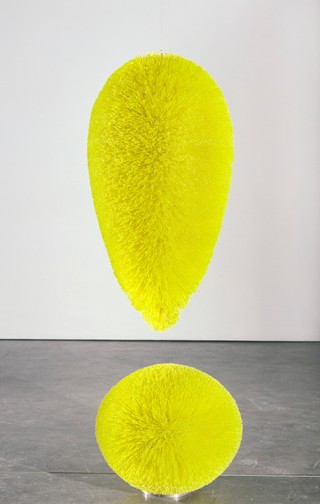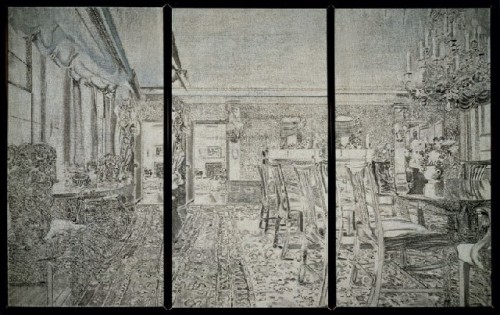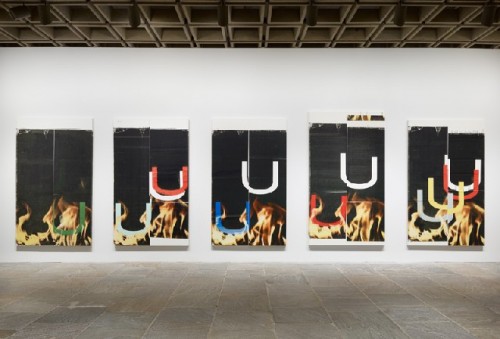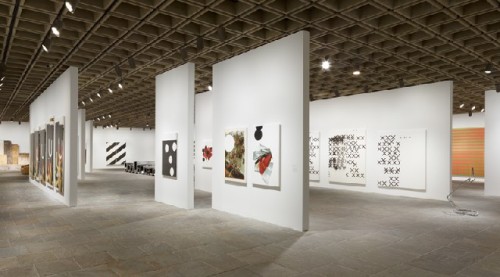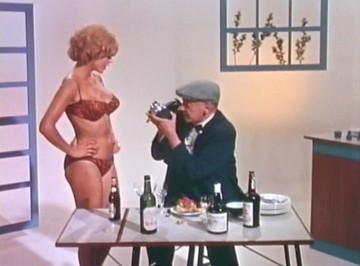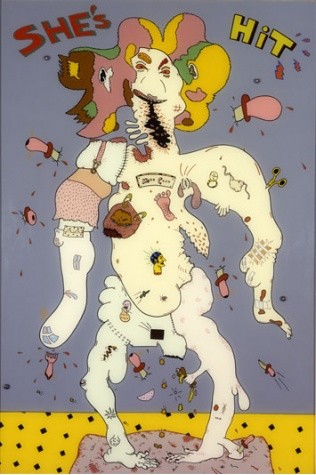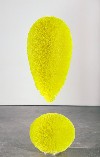What’s Wrong with the Whitney Museum
Enervating Mix of Holiday Shows
By: Charles Giuliano - Dec 16, 2012
In the midst of the Holiday season it’s prime time for cultural tourism in the Big Apple.
So why did a visit to the Whitney Museum of American Art seem so blah humbug?
The museum is counting down its last days on Madison Avenue before a move to the Meatmarket, downtown district near the popping High Line.
Until then, the venerable institution appears to be running on curatorial vapors. There is a deadly combination of the recycled- Richard Artschwager! and Sinister Pop- and a signifier of the alleged bright future Wade Guyton: Os which I just don’t buy into.
This is a second retrospective for the 88-year-old Artschwager at the Whitney. The first was in 1988. Arguably, the new current exhibition is one too many.
Originally trained as a scientist he turned to making objects and had his first show at the Leo Castelli Gallery, a bastion of Pop, in his 40s.
There is much to admire in his austere conflation of pop inspired, witty, ersatz objects suggesting furniture, elegant crafted, generic materials like the lowly formica, and deadpan grisaille images.
Actually, I rather liked his portrait of a then much younger art dealer Holly Solomon. Given the distance he creates between himself and the images he creates it would be a tough slog to extract exactly what he thought about the New York based celebrity.
With the work of Artschwager, for the most part, to see is to get it. If you have eyes the work is more or less comprehensible.
It was rather annoying to find myself in the wake of an eager Whitney docent. Undoubtedly, she is the graduate of an intensive program of critical studies based on a densely theoretical analysis of the objects. There was overkill as she explained the use of negative space in a mid sized cube which, when deconstructed, coughs up the imagery of a table with white cloth on top set to accentuate a diamond pattern. Her commentary offered not a hint of humor or irony.
Which is really the point of much of his work. And what connects him to the pop era which he straddled somewhat akimbo. He might just as well be equated with minimalism (without the content) or conceptualism (a catch all umbrella term when all else fails).
Contemplating the work entailed a measure of respect and concentration. The artist is recognized as a master of his generation. He has his secure place in the canon among scholars and curators.
But, for a Holiday show, Artschwager is a hard sell during a season when museums strive to feature blockbusters.
Which one might also say about the ambitious but numbingly enervating floor devoted to the 40-year-old artist Wade Guyton. The show has been curated by Scott Rothkopf, a 36-year-old rising star of the Whitney.
Yes, I know, youth must be served and all that.
But were this a show I stumbled upon in Chelsea it would have received the same ten minute walk through, a glance here and there, that it deserves in the museum.
Truth is, I don’t get to New York as often as I should. So I am not initiated into the current scene and precisely why this work is regarded as particularly significant.
For that, praise the Lord, we have the beatific Roberta Smith of the Times who opines that “The Whitney Museum has a hit on its hands: a beautiful show organized by a young curator that makes a cogent case for the work of a young artist…(he) is both a radical and a traditionalist who breaks the mold but pieces it back together in a different configuration. He is best known for austere, glamorous paintings that have about them a quiet poetry even though devised using a computer, scanner and printer.”
My goodness. How did I miss that?
“Uninterested in drawing by hand, much less in wielding a paintbrush, he describes himself as someone who makes paintings but does not consider himself a painter. His vocabulary of dots, stripes, bands and blocks, as well as much enlarged X’s and U’s and occasional scanned images, combines the abstract motifs of generic Modernism and the recycling strategies of Andy Warhol and Pictures Generation artists like Richard Prince and Sherrie Levine,” she continues.
We also learn that he started looking at actual paintings only after intensive study of theory. Apparently, he is as interested in contemplating art in books as on the walls of museums. There is something about how the art gets flattened and reproduced graphically.
Try to imagine knowing Michelangelo’s Sistine Chapel ceiling only through reproductions in books. How would one ever comprehend that sublime space reduced to flat reproduction?
This is exactly what I heard from a young professor who was hired to teach modern and contemporary art. He was trained in Texas. I asked if now that he was in Boston would he be going to New York to tour museums and galleries? Perhaps, he said, if he had time between sessions of the annual meeting of the College Art Museum. He was teaching Cindy Sherman based on articles and reproductions in Art Forum.
Surely Guyton would be among his star students.
Yeah, scanning and Photoshop are cool. How avant-garde to take the human hand and touch out of the mix with drawing and stuff. Awesome.
Doesn’t it all track back to Duchamp who pronounced painting as “too retinal?”
He was right you know.
But staggering around the Guyton exhibition, which is making year end season lists, I wondered just where is the humanity?
With two iffy shows, general public wise, the ersatz crowd pleaser is the muddled and not terribly interesting Sinister Pop. Although the curators have reached into the corners, and unearthed artists beyond the usual suspects, this mostly lame retread of a show offers familiar works with no particularly new or earth shattering insights.
If you like Pop Art this was mostly samosamo.
Particularly disappointing was the space normally devoted to screening films and videos.
With time on my hands, indeed an entire day devoted to exploring the Whitney, I looked forward to seeing obscure underground films.
Instead of a single screen image there was a hodgepodge installation of several flat screens and individual monitors cluttering the space. Seated on a bench I maneuvered around to catch this and that screen.
It was mostly a pastiche of vignettes with the whole far less than the sum of its parts.
As far as learning what was sinister about Pop in film/ video of the classic era of the 1960s, well, fuggedahboutit.
Basta.

